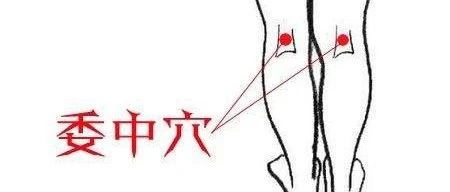 Clinical Palpation Diagnosis and Applications—-QingmuWith years of clinical experience and continuous learning and communication, I summarize the abdominal diagnosis in palpation, excluding pulse diagnosis, as follows. Some of this knowledge is learned from books, while some is gained through mutual exchange, and I will not specify the original sources here. Some are also my personal experiences.Weizhong (Bladder 40): By touching this point, one can determine whether the patient is sweating or not based on its moisture level. In cases of external pathogens, if the patient is unclear about sweating, this point can be palpated. Dryness indicates no sweat, while moisture indicates sweating. If one side is dry or moist, it indicates unilateral sweating.
Clinical Palpation Diagnosis and Applications—-QingmuWith years of clinical experience and continuous learning and communication, I summarize the abdominal diagnosis in palpation, excluding pulse diagnosis, as follows. Some of this knowledge is learned from books, while some is gained through mutual exchange, and I will not specify the original sources here. Some are also my personal experiences.Weizhong (Bladder 40): By touching this point, one can determine whether the patient is sweating or not based on its moisture level. In cases of external pathogens, if the patient is unclear about sweating, this point can be palpated. Dryness indicates no sweat, while moisture indicates sweating. If one side is dry or moist, it indicates unilateral sweating.
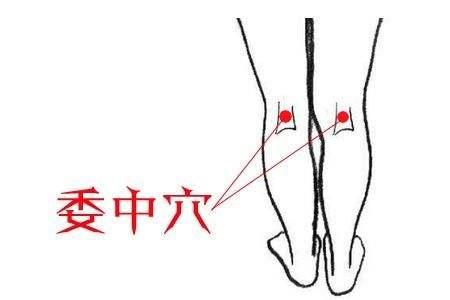
Quanwok (Fist Cavity): When the hand is clenched into a fist, the depression slightly behind the gap between the index and middle fingers is the fist cavity. If pressing this area causes significant pain, it indicates a cervical spine issue, corresponding to the indications of Ge Gen (Kudzu). Continuous pressure on this area can also treat cervical spine problems.Shangwei (Stomach 21): This is referred to as the “heart under” in Zhang Zhongjing’s writings. If pressing this area causes pain or a feeling of fullness and discomfort, it indicates a condition of “heart under obstruction,” which is a primary symptom of formulas like Ban Xia Xie Xin Tang (Pinellia Decoction to Drain the Heart). The Wu Mei Wan (Mume Pill) does not have this symptom, while Huang Lian Tang (Coptis Decoction) has a mild version of it.Right Hypochondrium: At the right costal arch, light tapping causes pain or discomfort, or pressing along the rib margin downwards causes a feeling of fullness and discomfort, indicating a condition of “chest and hypochondrium fullness,” corresponding to Xiao Chai Hu Tang (Minor Bupleurum Decoction). If there is also tenderness below the xiphoid process, it corresponds to Chai Gui Tang (Bupleurum and Cinnamon Decoction). If tapping the right costal arch causes pain below the xiphoid process, it indicates a condition for Xue Fu Zhu Yu Tang (Blood Mansion Decoction to Remove Stasis).Zhongwan (Ren 12): Tenderness here is commonly seen in Da Chai Hu Tang (Major Bupleurum Decoction). After meals, if there is a feeling of fullness and stagnation at this point, it corresponds to a combination of Xiao Chai Hu Tang and Ping Wei San (Calm the Stomach Powder).
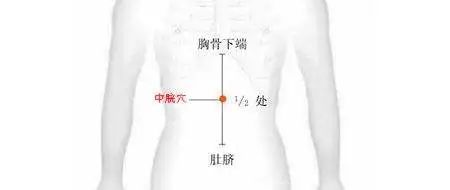
Xiawan (Ren 10): Pressing from above and below, the closer to Xiawan, the more one feels a “hardness like a plate” in the “heart under,” indicating a condition of Gui Zhi (Cinnamon Twig) Decoction with Shao Yao (Peony) and Ma Huang (Ephedra). The swelling in this condition is between gas swelling and water swelling, with a soft elasticity upon pressing, returning to normal after release, indicating true water swelling. If the area near Xiawan is as hard as iron, Zhi Zhu Tang (Atractylodes Decoction) can be used in conjunction.Shuifen (Water Point): One inch above the navel, pressing this point causes pain or significant resistance or discomfort, indicating a condition for Xuanfu Hua Tang (Inula Flower Decoction) and its related indications. (Note: Professor Liu Baohua uses Hua Yu Ling Tang (Blood-Transforming Decoction) for tenderness at this point, which is a modified formula of Xuanfu Hua Tang.)Huangshu (Huang’s Point): 0.5 inches to the left and right of the navel, tenderness indicates prostate disease. After treatment, if pressing this point no longer causes pain, it indicates a cure. If tenderness is only found at the left Huangshu point, it corresponds to Si Ni San (Frigid Extremities Powder).Navel Area: Centered on the Shen Que point, pressing up, down, left, and right causes pain and hard lumps, commonly seen in Dang Gui Shao Yao San (Angelica and Peony Powder).
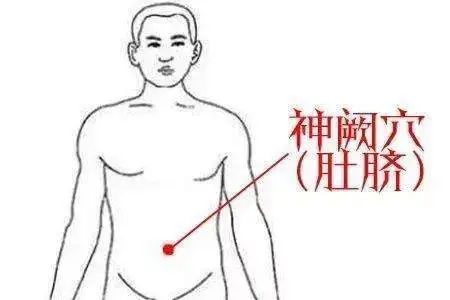
Yang’s Points: A line from the navel to the highest point of the iliac bone, with points on both sides at two-thirds down from the navel, is referred to as Yang’s Points (Note: Western medicine has the right McBurney’s point, which is in the same location but lacks a left point; this is a clinical self-naming to commemorate Yang San Zhao). Tenderness at this point indicates insufficient liver qi and heart yang, corresponding to Xiao Bu Gan Tang (Minor Liver Tonic Decoction) and Da Bu Gan Tang (Major Liver Tonic Decoction) (Note: The main symptoms of these two formulas are often dreams of deities, ghosts, and deceased individuals, with frequent nighttime awakenings due to fear and anxiety).Roll Powder: Two inches to the left and right of the navel, at the Tian Shu points, using four fingers to press and search, and pressing downwards, if a cylindrical mass is found that causes pain, it is named the Roll Powder condition, corresponding to Da Jian Zhong Tang (Major Construct the Middle Decoction). This condition is often seen in incomplete intestinal obstruction, and formulas like Ban Xia Xie Xin Tang and Wu Mei Wan often accompany this condition. If this condition is observed clinically, it is essential to use this formula afterward; otherwise, the disease is likely to recur and cannot be eradicated.Left Lower Abdomen: Tenderness or a cord-like hard mass indicates a condition for Gui Zhi Fu Ling Wan (Cinnamon and Poria Pill).Right Lower Abdomen: Tenderness or a hard mass indicates a condition for Tao He Cheng Qi Tang (Peach Pit Decoction to Order the Qi).A pencil lead-like protrusion along the line from the navel to the Guan Yuan point indicates a condition for Shen Qi Wan (Kidney Qi Pill).Inverted Eight Shape: Pain upon pressing the edges of the left and right groin, forming an inverted eight shape, indicates a condition for Zhen Wu Tang (True Warrior Decoction).Rectus Abdominis: Tightness and spasm of the rectus abdominis muscles on both sides of the stomach, accompanied by “tension” symptoms, indicate a condition for Gan Mai Da Zao Tang (Licorice, Wheat, and Jujube Decoction).Diagnosis Method for Ankylosing Spondylitis: Tenderness at the sacroiliac joint, pubic symphysis, groin area (inguinal line), and Ba Chao point + frequent cervical discomfort (accompanied by tenderness at the fist cavity. If three of these five points are simultaneously present, or if two points are present along with three symptoms, a diagnosis can be made) + waking up in pain + pain relief with movement + morning stiffness.
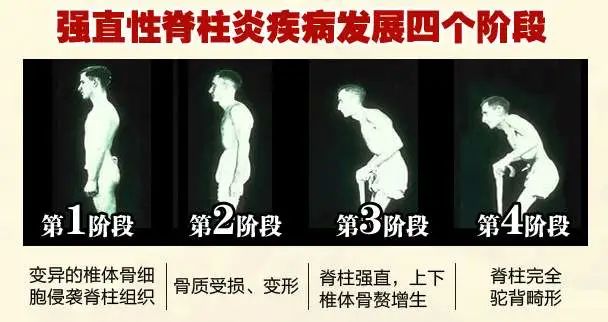
Diagnosis Method for Cold and Heat: For external heat, pressing the chest and abdomen, if prolonged pressure feels cold, it indicates heat on the surface, not internally. If prolonged pressure feels burning hot, it indicates heat internally, corresponding to both surface and internal heat. If external heat persists despite treatment, and there is suspicion of transitioning to a yin condition, touching from the forehead downwards, if it becomes cooler past the navel and cold at the knees, it indicates a transition to a yin condition.Three Imprints and Two Touches Method: The three imprints refer to the nail imprint (a pale white mark at the base of the nail), tongue teeth imprint, and cheek teeth imprint (marks from teeth pressing against the mucosa on both sides of the tongue and cheeks). The two touches refer to palpating the liver and spleen areas on the ear and checking for thickening, tenderness, or hard nodules; palpating the stomach area and one inch to the left of the navel for tenderness. If present, it indicates a positive reaction.One observation is to check the size and quantity of white spots on the skin (as large as broad beans or as small as millet grains). The three imprints differentiate cold and heat, the two touches differentiate liver stagnation, and the one observation differentiates toxic accumulation. If the nail imprint is small (normal is about 2mm), and the tongue and cheek imprints are significant, it can be diagnosed as a cold condition. Positive reactions from the two touches indicate the presence of stagnation, with qi and blood stasis, indicating a need for downward treatment. A large number of small white spots on the skin indicates heavy toxic accumulation, commonly seen in most cancer patients, requiring detoxification and resolution of accumulation. As the condition improves, the nail imprint will enlarge, more fingers will show nail imprints, and the tongue and cheek imprints will disappear. However, the positive reactions at the ear, stomach, and navel, as well as the disappearance of skin white spots, will take longer but will gradually disappear.Qingmu August 7, 2017, Shenzhen, Revised March 20, 2018.Click here to leave a message and view. Recommended Reading:A True TCM Enthusiast’s Long Journey to Find a Healer, Finding a TCM Practitioner Who Can Treat Illness is Difficult!Abdominal Distension, Acne, and Long-term Infertility, Differentiating and Treating with Seven Doses to RecoveryFollow-up Treatment of COVID-19 Patients by TCM Physician Qingmu
Recommended Reading:A True TCM Enthusiast’s Long Journey to Find a Healer, Finding a TCM Practitioner Who Can Treat Illness is Difficult!Abdominal Distension, Acne, and Long-term Infertility, Differentiating and Treating with Seven Doses to RecoveryFollow-up Treatment of COVID-19 Patients by TCM Physician Qingmu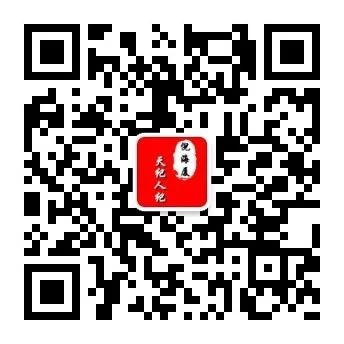 Ni Haixia Tianji RenjiLong press the QR code to followFor more exciting articles
Ni Haixia Tianji RenjiLong press the QR code to followFor more exciting articles

